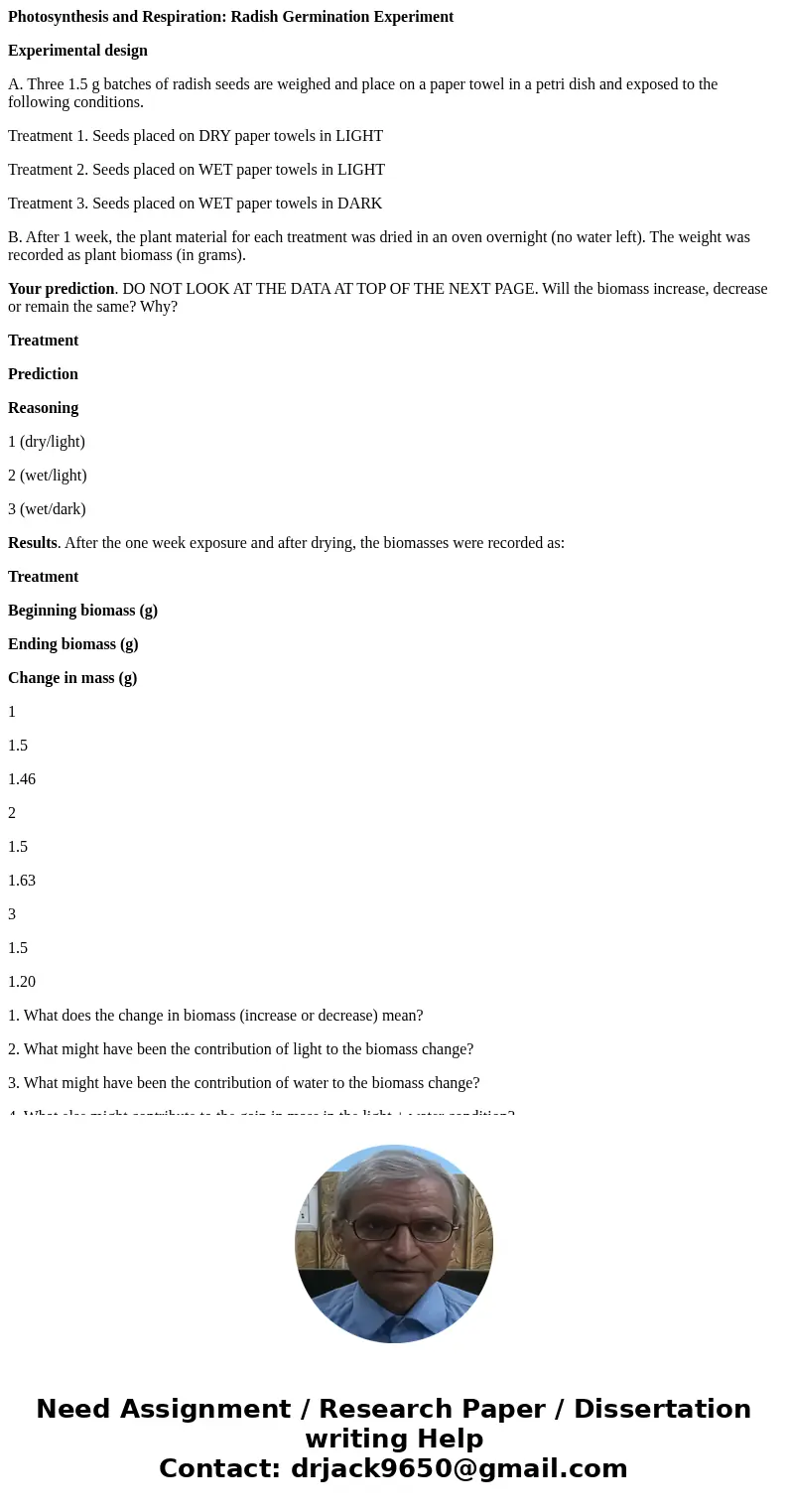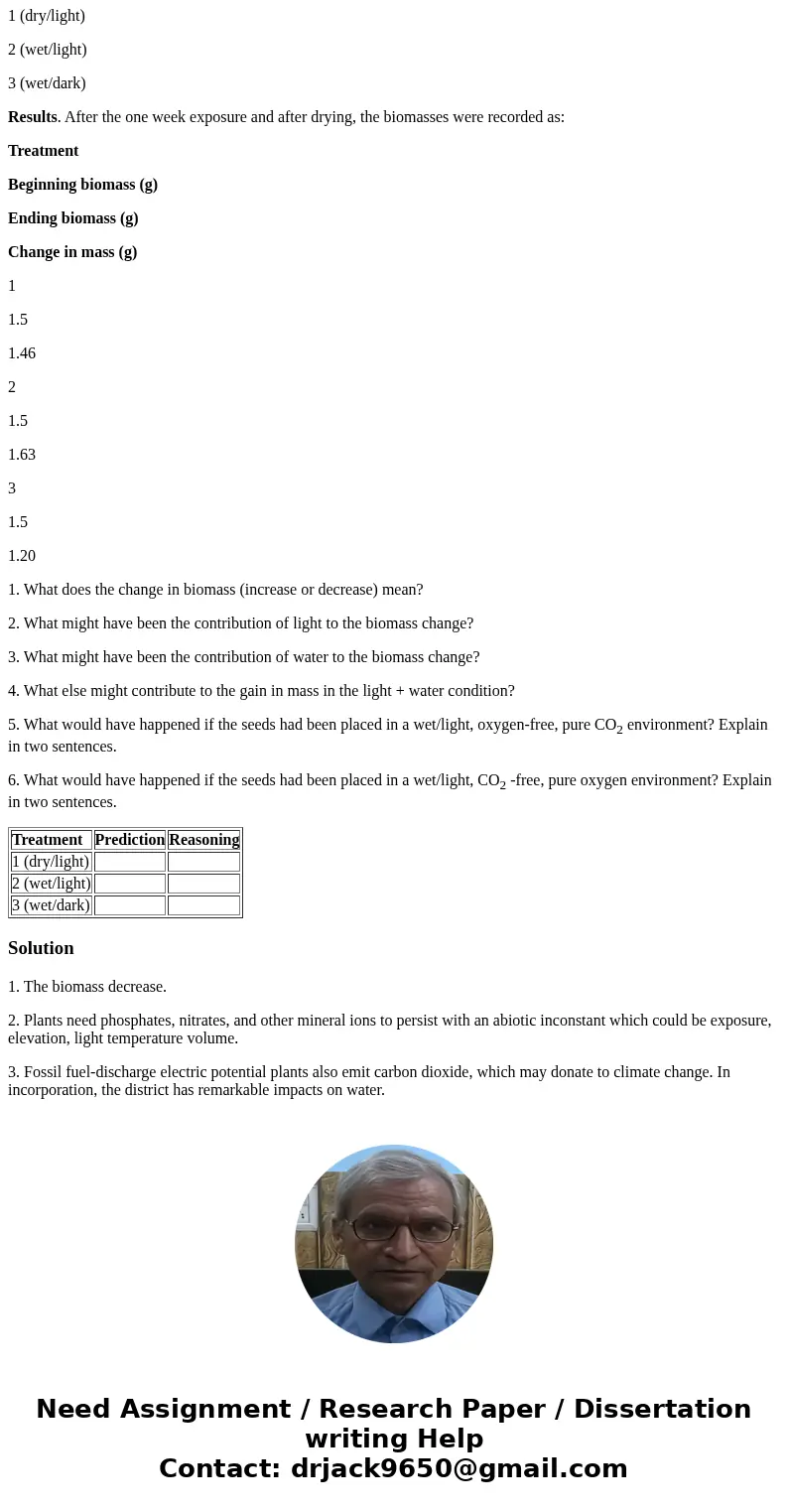Photosynthesis and Respiration Radish Germination Experiment
Photosynthesis and Respiration: Radish Germination Experiment
Experimental design
A. Three 1.5 g batches of radish seeds are weighed and place on a paper towel in a petri dish and exposed to the following conditions.
Treatment 1. Seeds placed on DRY paper towels in LIGHT
Treatment 2. Seeds placed on WET paper towels in LIGHT
Treatment 3. Seeds placed on WET paper towels in DARK
B. After 1 week, the plant material for each treatment was dried in an oven overnight (no water left). The weight was recorded as plant biomass (in grams).
Your prediction. DO NOT LOOK AT THE DATA AT TOP OF THE NEXT PAGE. Will the biomass increase, decrease or remain the same? Why?
Treatment
Prediction
Reasoning
1 (dry/light)
2 (wet/light)
3 (wet/dark)
Results. After the one week exposure and after drying, the biomasses were recorded as:
Treatment
Beginning biomass (g)
Ending biomass (g)
Change in mass (g)
1
1.5
1.46
2
1.5
1.63
3
1.5
1.20
1. What does the change in biomass (increase or decrease) mean?
2. What might have been the contribution of light to the biomass change?
3. What might have been the contribution of water to the biomass change?
4. What else might contribute to the gain in mass in the light + water condition?
5. What would have happened if the seeds had been placed in a wet/light, oxygen-free, pure CO2 environment? Explain in two sentences.
6. What would have happened if the seeds had been placed in a wet/light, CO2 -free, pure oxygen environment? Explain in two sentences.
| Treatment | Prediction | Reasoning |
| 1 (dry/light) | ||
| 2 (wet/light) | ||
| 3 (wet/dark) |
Solution
1. The biomass decrease.
2. Plants need phosphates, nitrates, and other mineral ions to persist with an abiotic inconstant which could be exposure, elevation, light temperature volume.
3. Fossil fuel-discharge electric potential plants also emit carbon dioxide, which may donate to climate change. In incorporation, the district has remarkable impacts on water.


 Homework Sourse
Homework Sourse